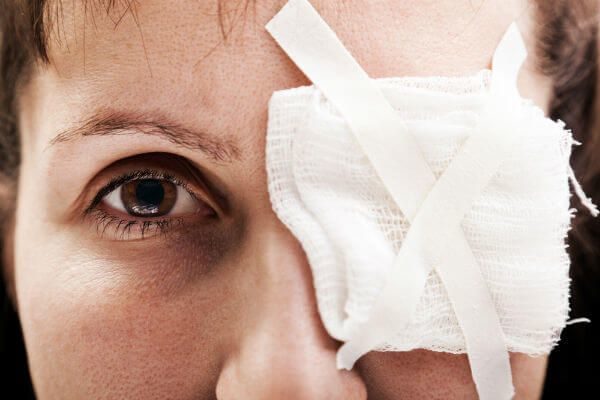
An eye injury that threatens a person’s vision also threatens his or her ability to earn a living and enjoy a normal life. As a result, a worker who suffers an eye injury on the job typically deserves workers’ compensation benefits.
While you may readily recognize this as being a fact, you may not know these seven other facts about eye injuries at work:
-
Dozens of significant eye injuries happen in the workplace every day.
The Bureau of Labor Statistics reports that 25,290 eye injuries occurred in the U.S. during one recent year that resulted in time away from work. That comes out to:
- 69 eye injuries per day
- 3 eye injuries per hour.
Eye injuries reported by the BLS caused workers to lose a median of two days of work. In other words, half of the reported injuries led to two days or more of missed work time.
Of course, those are only eye injuries requiring a day or more away from work. The Centers for Disease Control and Prevention reports in an archived report that, every day, an estimated 2,000 U.S. workers suffer a job-related eye injury that requires medical treatment.
-
Eye injuries are costly.
Eye injuries cost more than $300 million per year in lost production time, medical expenses and workers’ compensation benefits, according to the Occupational Safety and Health Administration (OSHA).
In Florida, 13 workers’ compensation cases involving a worker whose injury resulted in vision loss arose during a recent year, according to the WC Claims Database.
The Florida Division of Workers’ Compensation awarded a total of $196,707 in eight cases in which benefits were paid, or an average benefit of $24,588. These awards included:
- $163,397 in medical expenses in six cases ($27,232 on average)
- $24,910 in indemnity (wage loss) payments in four cases ($6,227 on average)
- $8,400 in settlements in three cases ($2,800 on average).
-
“Something in my eye” is the most common eye injury.
Putting it in more formal language, a foreign object in the eye is the most common type of eye injury, accounting for 35 percent of them, according to Prevent Blindness America.
Common causes of workplace eye injuries include contact with:
- Flying objects (bits of metal, glass)
- Tools
- Particles
- Chemicals
- Any combination of these or other hazards.
-
Most eye injuries are preventable.
OSHA reports that thousands of work-related eye injuries that occur each year “could have been prevented with the proper selection and use of eye and face protection.”
According to the American Academy of Ophthalmology, wearing appropriate protective eyewear can prevent more than 90 percent of serious eye injuries.
-
Employers must supply protective equipment to employees whose jobs carry identifiable risk of eye injury.
OSHA requires employers to ensure the safety of all employees in the work environment. Eye and face protection must be provided whenever necessary to protect against chemical, environmental, radiological or mechanical irritants and hazards.
Ensuring worker safety also includes providing adequate training for all workers who require eye and face protection.
Eye and face protection requirements are addressed in specific OSHA standards for general industry, shipyard employment, longshoring and construction.
-
If you suffer an occupational eye injury, you need to report it to your employer promptly.
To be eligible for workers’ compensation benefits in Florida, you have to report an accident or medical diagnosis of an injury to your employer within 30 days. If you fail to meet this reporting requirement, your claim for workers’ compensation benefits may be jeopardized.You should report your accident in writing to your manager, supervisor or human resources (HR) manager. Your employer should file their own injury report with their workers’ compensation insurer within seven days. The insurer should then send you information about your rights within three days of hearing from your employer.
Make sure to keep a dated copy of your written report to your employer so you can prove you met your deadline.
-
A lawyer can play a key role in getting workers’ compensation benefits after you suffer an eye injury.
It is not unusual for a workers’ compensation insurer to delay paying a claim to a deserving employee who has been injured or to totally deny the claim. After all, insurance companies are for-profit businesses.
You should protect your rights after suffering an eye injury at work by getting help from an experienced workers’ compensation attorney.
Contact Orlando workers’ compensation lawyer, Frank M. Eidson, P.A., about any problems you have with your or your loved one’s workers’ compensation claim.




















